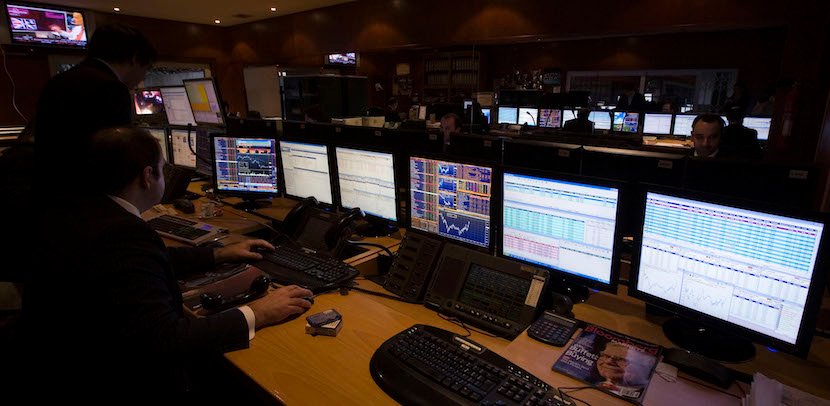
Investors in the United States are still very much embedded in a long-standing equity culture. They have become more sophisticated over the years, and conduct their own technical and fundamental research of specific stocks in order to make thought-out investment decisions. However, investors of all types are quickly seeking opportunities outside the equity realm as their confidence in their investment and trading skills continues to grow. Those investors are now turning to commodities in record numbers, and they’re using every possible financial instrument to gain exposure to physical commodity prices.
Commodities have been available to investors for decades, but why has their popularity grown so rapidly in recent years? The appeal is attributable to a variety of conditions, all of which will eventually make commodity trading as simple as buying and selling stocks, if it has not achieved that level simplicity to some degree already. Here’s why:
1. Well-known media outlets provide heavy coverage of commodity prices
2. Certain commodities are affected by geo-political risk and natural catastrophes, and are therefore newsworthy
3. Investors want to diversify their portfolios into non-equity asset classes
4. Data has become cheaply and readily available
5. Brokerage provide extensive research coverage
6. Online brokerage firms are expanding into futures with reduced commissions
What’s driving demand?
Investors continue to seek new opportunities beyond traditional equity offerings, but there have always been barriers to their participation in commodity markets. A general lack of understanding, inefficient access, and high agency costs for commodity investments have caused investors to look for opportunities in more traditional asset classes. However, those barriers are quickly disappearing, and commodity investments are beginning to be considered mainstream investments. Contributing to this effect are financial media outlets, the brokerage community, and growing concerns about current events.
Financial media outlets have become a source of information for retail investors, but have also become a source of entertainment. Some financial news channels may appear more professional than others, but they all have content that appeals to a wide range of viewers – from the novice investor to the sophisticated trader. Those media outlets help popularize commodities by focusing on spot prices, economic data, and exchange activity all throughout the day.
In addition to financial news reporting, media outlets provide continuous coverage of geo-political tension as well as natural catastrophes occurring all over the world. Investors can quickly gather detailed news about such events via the Web and television, allowing them to develop logical conclusions regarding the near-term impact on certain commodity prices. Those factors, combined with the underlying perception that emerging economies will require greater commodity consumption, will result in accentuated volatility in commodity prices.
Research coverage of commodities by major brokerage firms also helps promote commodities. Whether that coverage is in the form of equity-based sectors (i.e., stocks that derive their revenue primarily from activity in specific commodities) or in various instruments that provide exposure to commodity prices, investors are the target audience. Sell-side research is still very influential even after the Internet stock craze highlighted conflicts of interest. That is because such conflicts do not exist, or are not as apparent, in commodity markets.
Competition among brokers will also add to the promotion of commodities as investments. That competition will be based on their ability to provide customers with access to new investment opportunities, as well as tools that allow customers to make informed investment decisions. Commodity investment represents a new frontier for brokers because it allows them to expand beyond their traditional stock and bond offerings and into a complementary asset class. Brokers can expect to find a very receptive audience because investors are growing weary of stock performance.
How do we gauge demand?
Demand for commodities has become easier to quantify than ever before. It is exhibited through the success of “proxy” products, including mutual funds, equity index funds, equity index options, and commodity futures. Popular investments in the U.S. include the PIMCO Commodity RealReturn Strategy funds (symbol, PCRDX), the Energy Select Sector SPDR (symbol, XLE), StreetTRACKS Gold Shares (symbol, GLD), and more recently, commodity pools like the United States Oil Fund (USO). On the trading side, there are dozens of derivatives ranging from traditional commodity futures contracts, to options on equity indexes that track the performance of specific commodity sectors.
The PIMCO fund is a traditional mutual fund that passively tracks the performance of the Dow Jones AIG Commodity Total Return Index. The index covers the combined performance of a basket of commodities via their associated futures prices. The fund uses derivative instruments to gain direct exposure to that index. As of November 2008, the PIMCO funds had assets of over $7 billion since their inception about 4 ½ years ago,(1) well off its highs of over $12 billion earlier this year when commodity prices were rising in unison, but still an impressive amount. As of November 2008, there were at least 132 commodity-focused mutual funds with total assets of over assets of over $35 billion.(2) While mutual funds are good places to invest, they do not address the needs of more active traders. That’s where Exchange-Traded-Funds (ETFs) and Exchange-Traded Notes (ETNs) come into play.
Partial List of Commodity-Focused Mutual Funds
Fund Name (symbol)_________________________Focus_________Net Assets ($, billion)____Inception Date
Vanguard Energy (VGENX)_____________________Energy________$4.97_________________5/23/84
PIMCO CommodityRealRet Strat Instl (PCRIX)______DJ-AIG Index___$3.88_________________6/28/02
T. Rowe Price New Era (PRNEX)________________Energy________$3.69_________________1/20/69
Vanguard Energy Adm (VGELX)_________________Energy________$3.37_________________11/12/01
Ivy Global Natural Resources A (IGNAX)___________Energy________$2.07_________________1/2/97
PIMCO CommodityRealRet Strat A (PCRAX)________DJ-AIG Index___$1.76_________________11/29/02
Vanguard Precious Metals and Mining (VGPMX)_____Metals________$1.69_________________5/23/84
Fidelity Select Energy (FSENX)__________________Energy________$1.58_________________7/14/81
Fidelity Select Energy Service (FSESX)____________Energy________$1.01_________________12/16/85
RS Global Natural Resources (RSNRX)___________Energy________$0.92_________________11/15/95
Source: fund sponsor’s websites and Yahoo! Finance, data as of October 31, 2008
Until recently, the only way for most individual and institutional investors to quickly access the commodities markets was to purchase stocks that focused on specific commodity sectors. That strategy was made much more efficient with the arrival of ETFs, which hold baskets of stocks in specific sectors. Low brokerage commissions, abundant liquidity, and all the efficiencies of an electronically traded product helped ETFs gain in popularity as both investable and tradable instruments. Even so, the funds are less than perfect proxies for commodities because they still carry the corporate risk of stocks they hold. The companies in a fund may also be engaging in hedging activity that dampens the correlation between their stock price returns and the commodities they produce. This paved the way for a new breed of exchange-traded instrument; one that attempts to securitize commodity prices and which is still available through ordinary stock brokerage accounts.
The StreetTRACKS Gold Trust, often referred to as the “Gold ETF,” is a trust that primarily owns gold bullion. This is one of the best examples of how Wall Street is repackaging commodities into equity-like instruments. The investment objective of this trust is to issue shares that reflect the price performance of gold. The shares trade under the ticker symbol GLD on the New York Stock Exchange. The trust was launched in November 2004 by the World Gold Council, and by October 2008, it had net assets of about $17.6 billion.




